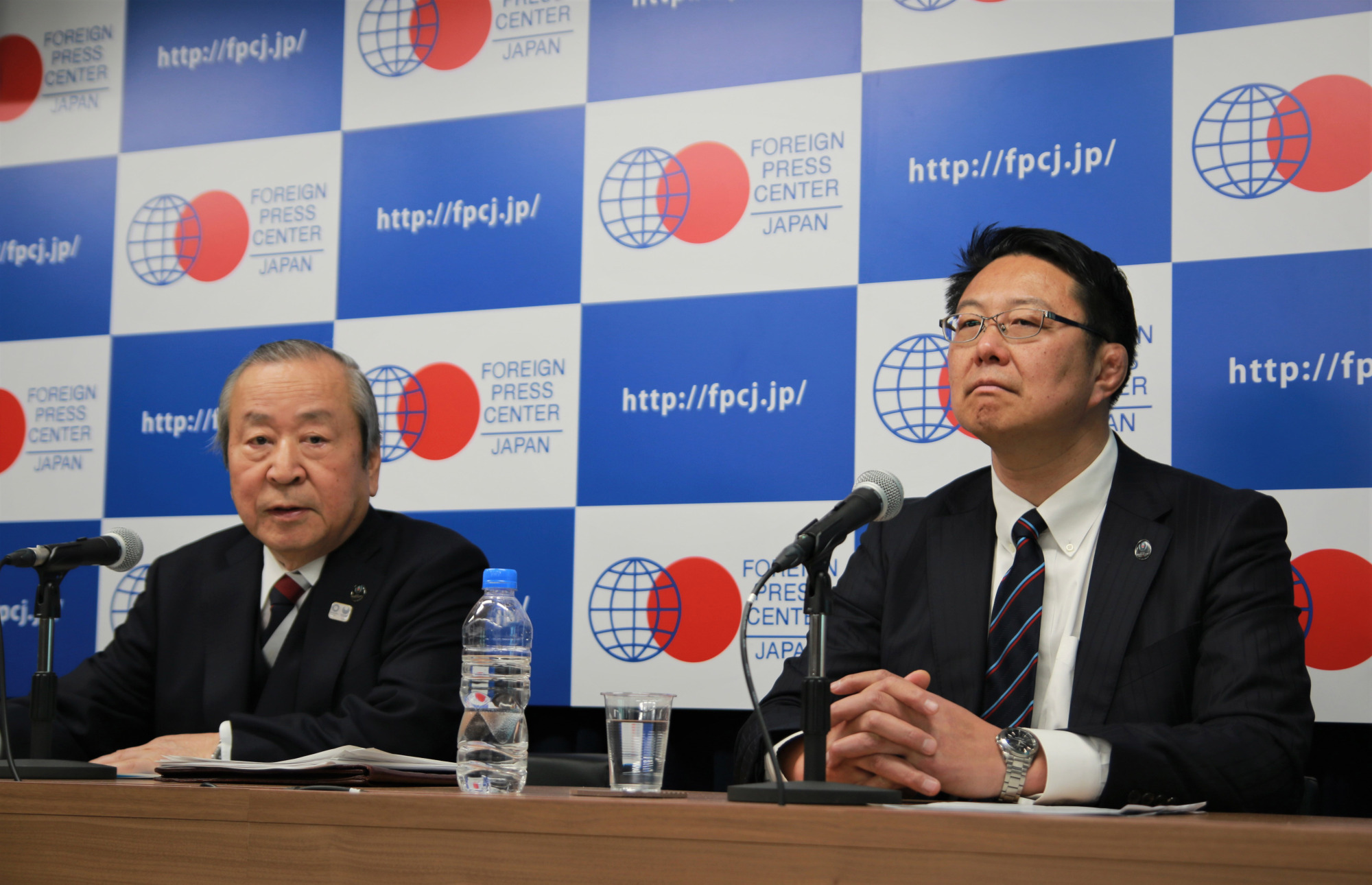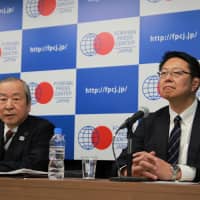With half a year to go until the first-ever Rugby World Cup in Asia, organizing committee chief Akira Shimazu insisted that the hosts are focused on making the tournament in Japan a "ground-breaking" event.
"The previous tournament in England in 2015, as you know, was such a great tournament. It was placed as a record-breaking event in World Cup history," said Shimazu, who officially serves as the CEO of the Rugby World Cup organizing committee, at the Foreign Press Center Japan on Thursday. "As you know, it will be the first World Cup in Asia, and the first World Cup that will be hosted in a non-traditional rugby nation. In other words, the first World Cup that will be held in a country that is not of the Tier One."
The 2015 event set several new records including attendance and viewership numbers, reportedly generating an economic output of £2.3 billion ($3 billion).
But Shimazu said that he and his 2019 organizers did not intend to measure themselves against the previous World Cup's achievements, and that instead the team hopes to be remembered for the legacies the Japan tournament will bequeath.
"We would like to make the 2019 World Cup a ground-breaking tournament, not competing with the 2015 tournament in terms of things like the scale of the event and attendance figures," Shimazu said, noting that the organizers have set a goal of promoting the game and increasing the number of players in Japan and Asia as one of the 2019 World Cup's biggest legacies.
Among the 12 host cities, Iwate Prefecture's Kamaishi is the smallest city, boasting a stadium that will hold just 16,000 fans during the World Cup.
But Kamaishi still hopes to show the world how much the city, which is located on the Sanriku Coast, has recovered from the 2011 Great East Japan Earthquake.
Yoshihiko Sakuraba, a former national team lock who serves as the ambassador for the 2019 World Cup, said that reconstruction in the town has accelerated even more since its host status at the tournament was determined. The 52-year-old also said that the city would like to capitalize on the opportunity to express its appreciation to the entire world for its support during and after the disaster.
Kamaishi's population was as high as 90,000 in the 1960s thanks to the presence of Nippon Steel Corporation, but that figure has declined since the company closed its mills in 1988. Following the earthquake and tsunami on March 11, 2011, the number of residents dropped even further and currently stands at about 34,000.
Despite its small stature, Kamaishi is known as a rugby town because of the Nippon Steel Kamaishi team, which is considered to be one of the most successful and decorated teams in Japanese rugby's history.
After Nippon Steel became unable to support the club as a corporate team, it reformed as the Kamaishi Seawaves in 2001 and currently competes in the Top Challenge League, Japan's second division. But Sakuraba said that the town's deep-rooted rugby culture had been continuously passed down to each successive generation.
"Since the team was called Nippon Steel Kamaishi, not only did the company's employees support us, but the people in the community have also cheered us on and come to the games," said Sakuraba, who himself played the club in its former and current itinerations. "That is because they were proud of the team, and felt that it was the team of their own town. The team and fans were so close."
Sakuraba recalled one anecdote of the bonds between the players and community which spread across the world following the 2011 catastrophe. Several foreign Seawaves players, including lock/flanker Scott Fardy, stayed in the city to assist with recovery efforts instead of evacuating from Japan.
"They declined the advice from their own embassies and remained in Kamaishi," said Sakuraba, who now serves as general manager for the Seawaves. "They could not abandon the people who had supported them. They genuinely showed the spirit of rugby. The players and fans had been close, but (that show of support) helped make it even closer."
Sakuraba said that several non-Japanese former Seawaves had told him they would love to return to Kamaishi during the World Cup.
Kamaishi Unosumai Memorial Stadium will host group stage contests Fiji vs. Uruguay and Namibia vs. Canada on Sept. 25 and Oct. 13, respectively.




















With your current subscription plan you can comment on stories. However, before writing your first comment, please create a display name in the Profile section of your subscriber account page.